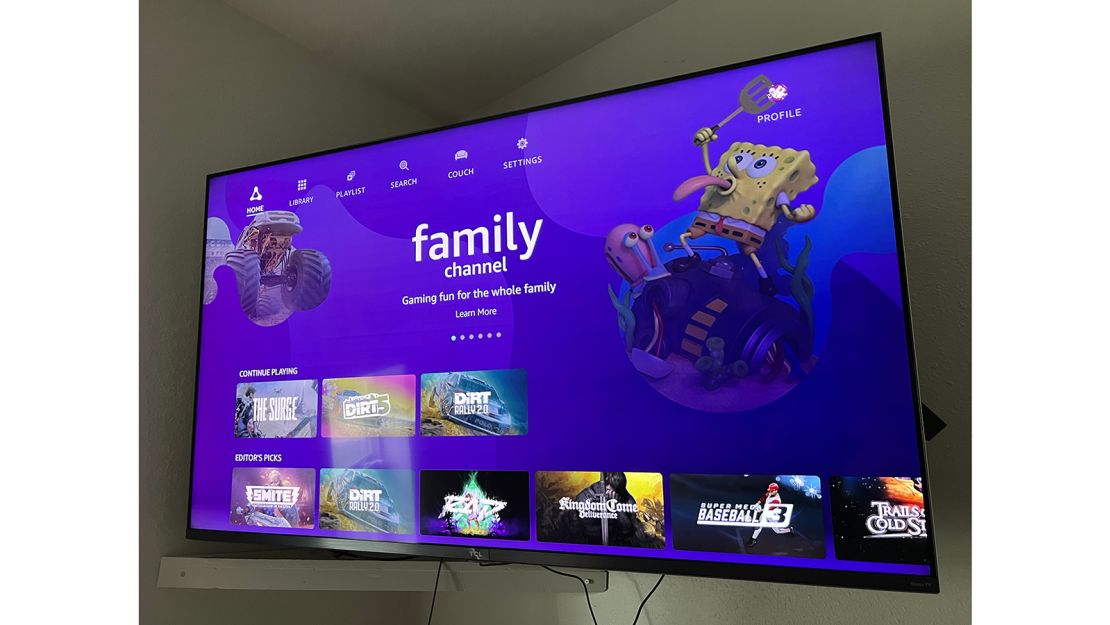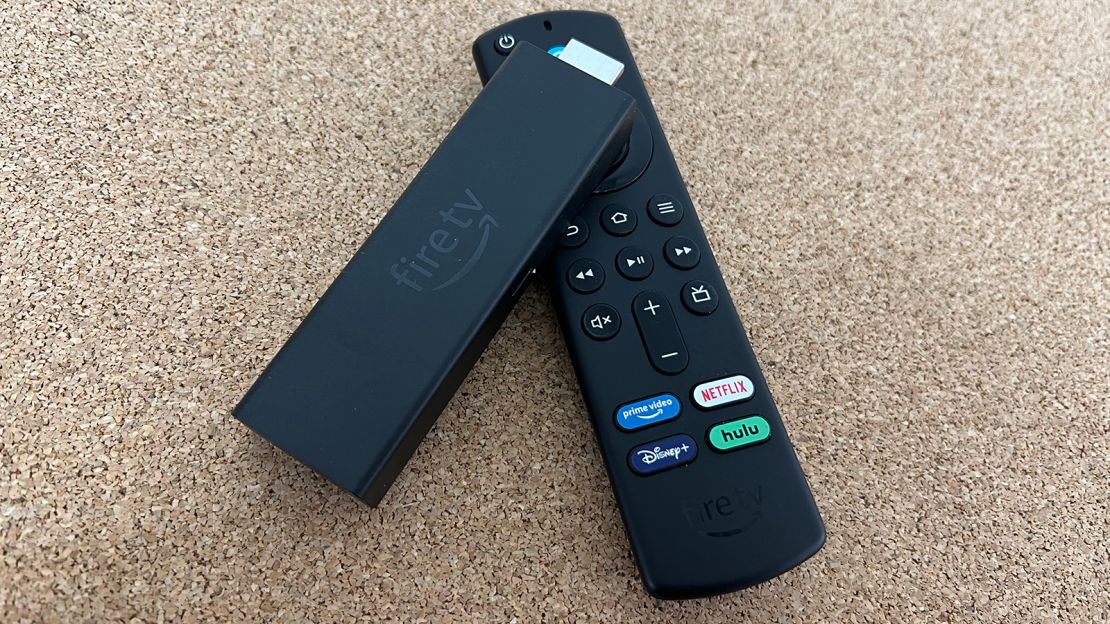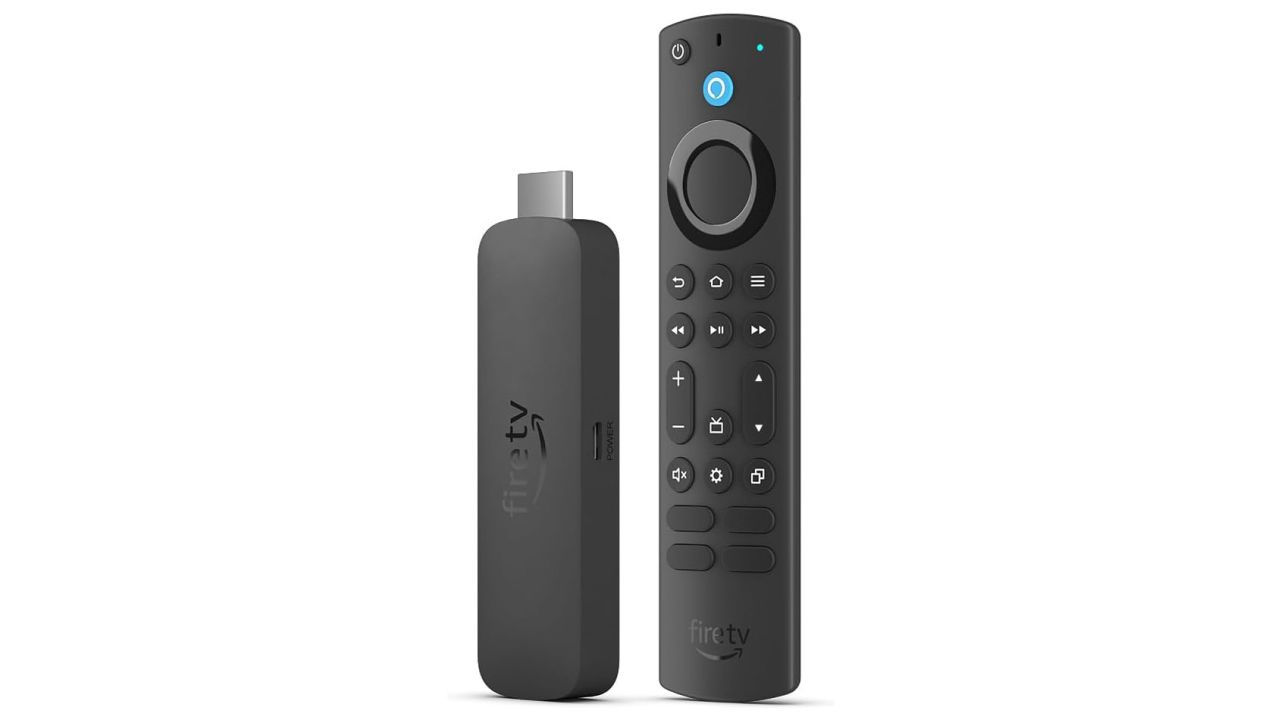Amazon’s latest streaming device, the Fire TV Stick 4K Max, features increased performance and faster Wi-Fi for an attractive $54.99 price.
We’ve been testing the small dongle along with Amazon’s Luna cloud gaming service to gauge if the performance gains are just marketing from the online retailer or the real deal.
And, not to spoil it, but the Fire TV Stick 4K Max is the real deal. Let’s dive in to see if it’s right for you.
Score stunning picture displays with 4K Ultra HD, Dolby Vision, HDR and HDR10+, depending on your television’s compatibility. You can also access live TV and take advantage of smart home features with your streaming stick of choice.
The who, what and how
Who it’s for: The $54.99 Fire TV Stick 4K Max is for those who want the most powerful Fire TV Stick or those looking to upgrade to 4K from a standard Fire TV Stick or Stick Lite.
What you need to know: It’s faster than any other Fire TV Stick Amazon sells, and it leverages that power to get you quicker access to content through the included voice remote. Additionally, it deeply integrates with the rest of Amazon’s products. The Max lives up to its name by providing the maximum performance out of the lineup — at least in this form factor.
How it compares: The Fire TV Stick 4K Max is $20 more than the Fire TV Stick 4K. The added cost gives you a faster processor, improved Wi-Fi performance and more memory. The pricing is very competitive with the likes of Roku’s $69.99 Streaming Stick 4K+ that starts shipping Oct. 17. We haven’t tested the Stick 4K+, but on paper, it looks like the Fire TV Stick 4K Max is the better deal. It also stacks up nicely against the $49.99 Chromecast with Google TV, offering a similar set of features and streaming quality for nearly the same price. The biggest difference between the two is which smart assistant platform you use more. For those who have deeply integrated Amazon’s Alexa and Echo products throughout their home, the Stick 4K Max is the clear choice.
Initial setup is getting better

The Fire TV Stick 4K Max looks a lot like previous Fire TV Sticks from Amazon, but it’s slightly longer.
It’s a black, rectangular dongle that either plugs directly into an HDMI port on your TV or through an included extension cable that comes to let it hang down from your TV. There’s a single Micro USB port on the Fire TV Stick 4K Max to power it, and Amazon includes all of the necessary cables in the box, along with an Alexa Voice Remote and two AAA batteries.
After it’s all connected and has power, you’re ready to set up the device. We linked our Amazon account and started to go through the rest of the prompts when we noticed something new.
We’ve set up and tested many Amazon Fire TV devices, and this was the first time we remember being asked if we wanted to restore a new device from a backup of another Fire TV device.
We don’t know when Amazon added that feature, nor do we care. But we’re ecstatic it’s an option now and wish it went even further. Currently, using a backup only downloads all of your apps and games. It doesn’t sign you back into those apps and games, so while it’s a nice touch, we still had to spend plenty of time signing back into services like Netflix, Hulu and Discovery+ — oftentimes with long and complex passwords. It’s a chore that we wish were simplified.
That said, not having to go back through and redownload everything was a welcomed experience.
All said it took about 15 minutes to go from a boxed-up Fire TV Stick 4K Max to streaming our first show.
Ready, set, stream

Amazon has increased the performance of the Fire TV Stick 4K Max across the board. There’s a slightly faster processor, more memory and Wi-Fi 6 support. You won’t need to do a thing to take advantage of those first two improvements, but to enjoy faster Wi-Fi speeds, you’ll need a Wi-Fi 6-compatible router. Something like Amazon’s own Eero 6, which is currently our top pick for best mesh Wi-Fi system, or another Wi-Fi 6-compatible system. Not only does Wi-Fi 6 support faster wireless speeds, but it also better handles more devices on your network.
To be clear, you don’t have to own a Wi-Fi 6 system in order to use the Stick 4K Max. It’ll work with your current Wi-Fi system; you just won’t be able to take advantage of its full capabilities.
Now, on to performance — getting around the interface on a Fire TV Stick 4K wasn’t something we had an issue with, but with the Stick 4K Max, navigating just feels smoother. Maybe it’s a placebo effect, but we’re inclined to think that the extra memory and slight bump in the processor’s performance is the real reason.
We could easily navigate the Fire TV layout with three different main options along the top: Home, Find and Live. Each category displays various apps, television shows or movies that you can start watching with a couple of clicks on the Alexa Voice Remote.
Starting a show like “Squid Game” on Netflix is almost instantaneous. That’s thanks to the beefier performance but also thanks to Wi-Fi 6 (we tested the Stick 4K Max on a Plume network).
As for picture quality, it’s great, of course. Amazon has never had an issue with the picture of its 4K streaming devices, and the Stick 4K Max sticks with that trend. In “Squid Game,” for example, the black masks against the bright pink outfits are vibrant and bright.
The Stick 4K Max streams 4K content and supports Dolby Vision, HDR, HDR10+ and Dolby Atmos audio. Naturally, you’ll need to have a TV with support for all of those metrics.
Good Amazon Luna gaming performance and handy new features

We also spent time testing Luna, Amazon’s cloud streaming service, on the Fire TV Stick 4K Max. We first paired the Luna Controller to the Stick 4K Max and then fired open the Luna app. Inside the app are several games, including top-tier titles like Dirt 5 or Metro Exodus, which are part of Amazon’s $5.99-per-month Luna+ subscription. There are even Ubisoft games like Far Cry 6 or Assassin’s Creed, but playing those requires a separate $17.99-per-month subscription.
Every game we played streamed without any issue, as if we had an Xbox or PlayStation connected to our TV. Games are limited to 1080p, so you won’t get to take full advantage of the graphics that you would get from a dedicated gaming console.
Another new feature we enjoyed testing on the Stick 4K Max is picture-in-picture mode to view security cameras around our home. Amazon’s Ring and Blink video cameras are supported. Using the Alexa Voice Remote, you can pull up any video camera that’s connected to your Amazon account.
For our testing, we routinely viewed a Ring Floodlight with the command “Show my garage camera,” and a few seconds later we’d see a livestream from the camera that oversees the front of our house. Selecting the PiP button would shrink down the feed, showing a thumbnail in the top right corner of the screen.
With the camera’s feed still going, we could still move around the interface without any hiccups or lag. We even streamed some of “The Great British Bake Off” while waiting for our kids to come home. It’s pretty neat and similar to how the Apple TV 4K handles showing off HomeKit-connected cameras on the big screen.
Bottom line

After a few days of using the Fire TV Stick 4K Max, it’s easy to recommend. Not only is its $54.99 price tag attractive, but its performance is unmatched by any other Fire TV Stick, or any Roku streaming stick at this price point for that matter.
Google’s $50 Chromecast dongle offers similar features but is outperformed by the Stick 4K Max. We’re eager to get our hands on the Roku Stick 4K+ so we can thoroughly test it, but after spending some quality time with the Stick 4K Max, it’s clear Roku finally has some stiff competition.
If you want the best 4K streaming stick Amazon has to offer, spend the extra money and get the Fire TV Stick 4K Max. It’s worth it.

















